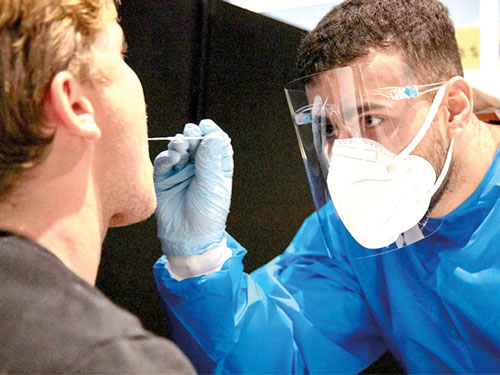All data and statistics are based on publicly available data at the time of publication. Some information may be out of date. Visit our coronavirus hub and follow our live updates page for the most recent information on the COVID-19 pandemic.
On November 26, 2021, the World Health Organization (WHO) indicated a new SARS-CoV-2 variant of concern, which became known as OmicronTrusted Source.
The variant has caused concern among health authorities because it appears to be highly transmissibleTrusted Source and likelier to reinfect. There have also been some worries that Omicron can bypass the protection conferred by COVID-19 vaccines. Pfizer maintains that three doses of its mRNA vaccine are able to neutralize Omicron in laboratory experiments and that two doses may still prevent serious illness following infection with this variant. Stay informed with live updates on the current COVID-19 outbreak and visit our coronavirus hub for more advice on prevention and treatment.
For these reasons, countries worldwide have been taking various measures and precautions to reduce the spread of Omicron among their populations. Nevertheless, within a world in constant motion, it may be impossible to stop it from spreading altogether. Some cause for optimism may be that various reports suggest that infections with this variant tend to cause milder symptoms than those with previous SARS-CoV-2 variants, such as Delta. But how can someone tell if they have the Omicron infection? Are the symptoms the same as those of infections with previous variants?
However, the CDC notes this list is not exhaustive, and people might experience different symptoms or combinations of symptoms. Furthermore, anecdotal reports on social media and other platforms claim that more specific combinations of symptoms characterize Omicron infections. The Zoe COVID Study — conducted by researchers from health science company ZOE and King’s College London in the United Kingdom — uses data from over 4,000,000 participants. The study’s recent analysis aimed to determine whether there were any differences between the most common symptoms of infection with the Delta variant and the most common symptoms of infection with Omicron.
They compared symptoms reported via the Zoe COVID Study app by U.K. participants who tested positive for COVID-19 in October 2021, when Delta was dominant in the U.K., with those who tested positive in December 2021 when Omicron had become the dominant variant. Preliminary analysis indicated that the most commonly reported symptoms reported in both months were largely the same: a runny nose, headache, fatigue, sneezing, and a sore throat. The findings suggest no strong differences in the most commonly experienced symptoms likely caused by the two SARS-CoV-2 variants. However, according to this self-reported data, the ZOE scientists also note that loss of smell and taste appear to be less common among people recently testing positive for COVID-19.










